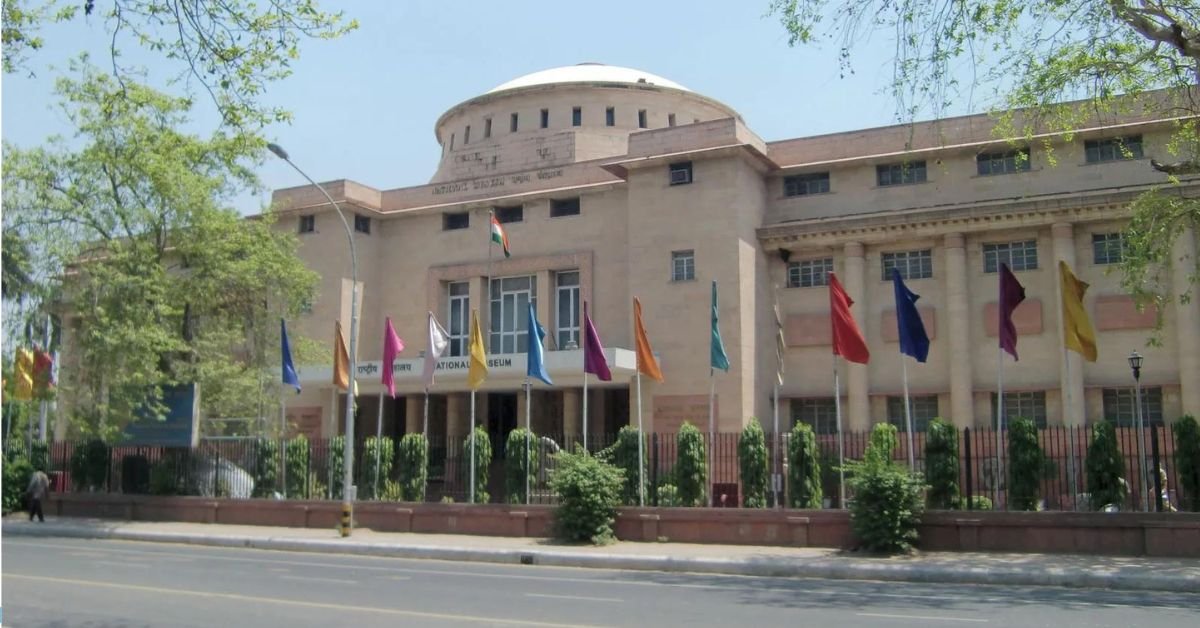Right in the heart of Delhi, the National Museum is a treasure chest filled with India’s amazing past. It’s one of the country’s biggest museums, showing off beautiful things from over 5,000 years ago!
From old statues and writings to modern paintings and fancy decorations, you’ll find something to love here. Whether you’re super into history, art, or just curious, this museum will amaze you. Let’s explore together and uncover the fascinating story of India.
How to reach:
By Air
If you’re flying into Delhi, you’ll land at Indira Gandhi International Airport. Here are your options to reach the National Museum:
- Metro: Take the Airport Express Line to New Delhi Station, then switch to the Yellow Line towards Central Secretariat.
- Taxi or Ride-Sharing: Grab a prepaid taxi, Ola, or Uber from the airport. The trip takes about 30-45 minutes.
- Bus: Delhi Transport Corporation (DTC) buses connect the airport to various parts of the city, including central Delhi.
By Metro
The Delhi Metro is fast and convenient.
- Closest Station: Central Secretariat on the Yellow and Violet lines.
- Getting There: It’s a short walk or rickshaw ride from the station.
By Bus
Delhi has a vast bus network.
- Bus Stops: Look for buses to Rajpath, Janpath, or India Gate.
- Bus Service: DTC buses serve these routes.
By Car or Taxi
For a direct route, hire a taxi or use a ride-sharing service.
- Address: Janpath, Rajpath Road Area, Central Secretariat, New Delhi, Delhi 110011.
- Parking: The museum has parking, but availability can vary.
By Auto-Rickshaw
Auto-rickshaws are a popular choice.
- Tip: Agree on the fare before starting your trip or use a metered auto.
By Bicycle
If you prefer a green commute, consider cycling.
- Bike Rental: Delhi has bike rental services.
- Route: The route via Rajpath is scenic, but watch out for traffic.
Best time to visit:
Winter (October to March)
This is the perfect time to explore Delhi and the National Museum. The weather is cool and comfortable, making it ideal for sightseeing. You can enjoy your museum visit without worrying about the heat.
Monsoon (July to September)
Delhi’s monsoon season brings relief from the summer heat, but it also means heavy rain. While the city looks lush and green, travel might be a bit tricky.
Summer (April to June)
Delhi’s summers are very hot, with temperatures often reaching over 40°C. If you must visit during this time, go early in the morning or late in the afternoon to avoid the hottest part of the day.
Attractions:
Indus Valley Civilization Gallery:
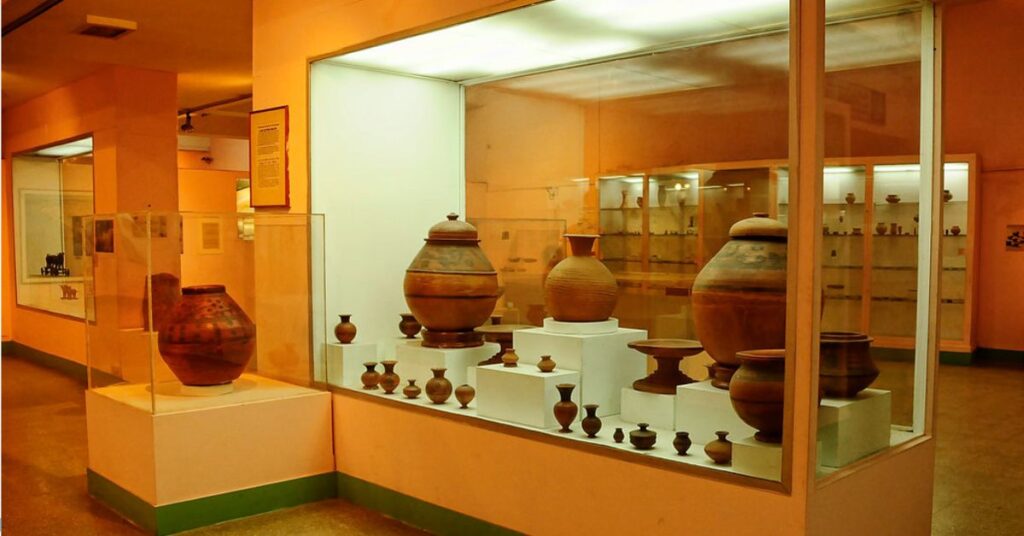
The Indus Valley Civilization Gallery is like a time machine that takes you back to one of the world’s first big cities! It’s filled with amazing things from places like Harappa and Mohenjo-daro, which were super cool cities thousands of years ago.
You’ll see beautiful seals with pictures of animals and magical beings, and pots that come in all shapes and sizes. There are also sharp stone and metal tools that show how clever these people were. And the jewelry is just stunning!
Maurya, Shunga, and Satvahana Art Gallery:
This gallery is like a time capsule filled with amazing art from a long time ago! You’ll see statues, pots, and old coins that tell the story of three powerful kingdoms: the Mauryas, Shungas, and Satvahanas.
The Mauryas made huge, beautiful stone statues and pillars, like the famous Lion Capital. The Shungas loved making little clay figures and telling stories through their art. And the Satvahanas were famous for their fancy carvings on big, round buildings called stupas.
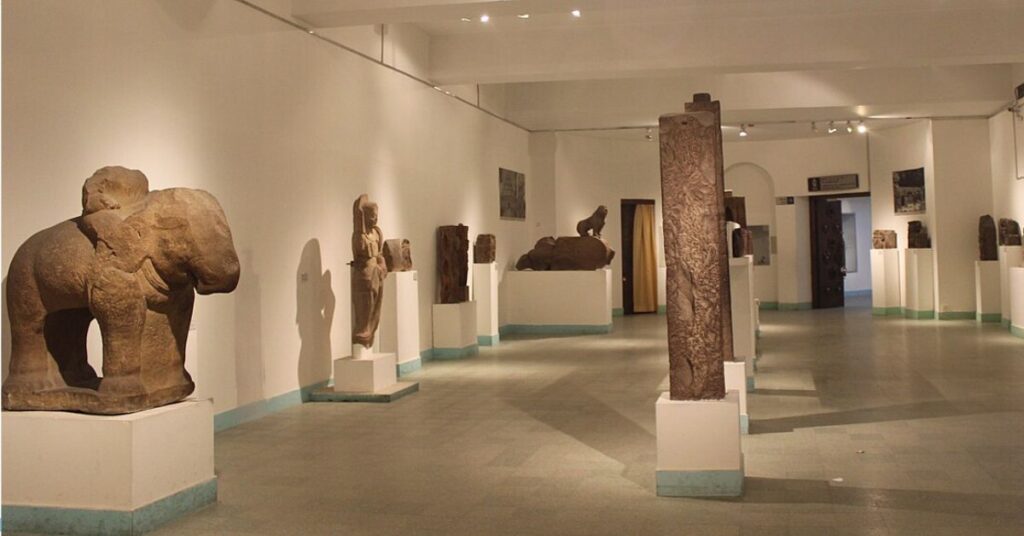
Gupta and Post-Gupta Period Gallery:
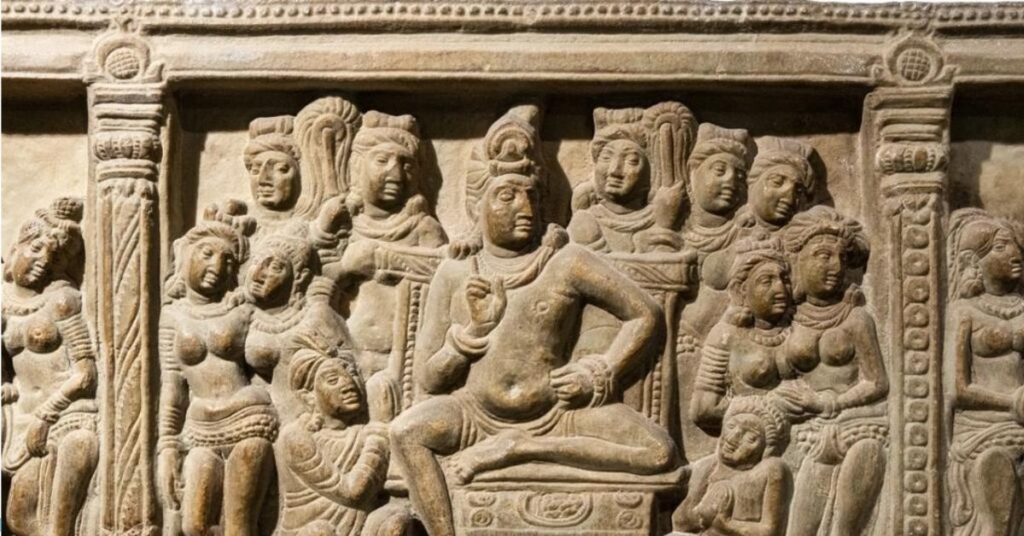
The Gupta and Post-Gupta times were a magical time for India, filled with amazing art, smart people, and beautiful stories. This gallery shows you what it was like back then.
You’ll see statues of Buddha and Vishnu that are so peaceful and perfect, they’ll make you feel calm. There are also fancy stone carvings with pictures of gods and goddesses that are super detailed. You can even see old coins that tell us about how rich and busy the country was.
Buddhist Art Gallery:
The Buddhist Art Gallery is a quiet and calming place filled with beautiful things. It’s like stepping back in time to learn about Buddhism and its art. You’ll see amazing statues of Buddha and other holy people that are super peaceful and look real. There are also colorful paintings and special objects used in Buddhist ceremonies.
This gallery is a great place to relax and think about life. You’ll learn about Buddhism and how it has influenced art and culture for so many years.
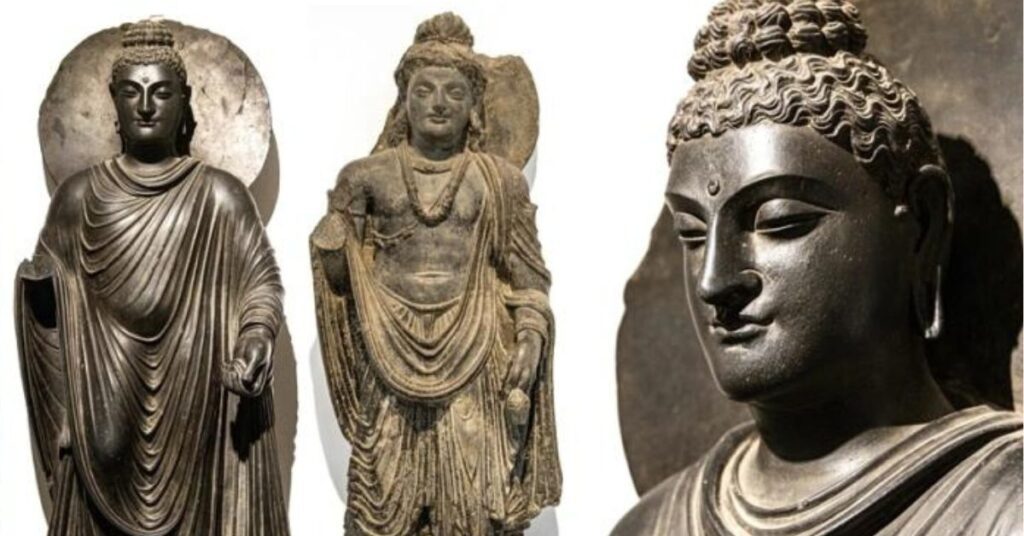
Local Experiences:
- India Gate: This grand memorial honors India’s fallen soldiers and is a peaceful spot, especially in the evenings.
- Rashtrapati Bhavan: The President’s home is famous for its beautiful architecture. You can visit the Mughal Gardens during certain times.
- Gandhi Smriti: Learn about Mahatma Gandhi’s life at the place where he spent his last days.
- Janpath Market: A lively place to find everything from traditional crafts to trendy clothes.
- Connaught Place: This historic area is filled with shops, restaurants, and cafes.
- Khan Market: For upscale shopping and dining, head to Khan Market.
- Street Food: Don’t miss the delicious street food on Pandara Road.
- Dilli Haat: Experience flavors from all over India at this open-air market.
- Lodhi Gardens: A peaceful park with old tombs and beautiful greenery.
- Nehru Park: Enjoy the outdoors and catch cultural events here.
- National Gallery of Modern Art (NGMA): Discover India’s modern art scene.
- Crafts Museum: Learn about traditional Indian crafts and see artisans at work.
- Kamani Auditorium and India Habitat Centre: These places host amazing dance, music, and theater performances.
- Gurudwara Bangla Sahib: Experience Sikh culture at this beautiful temple.
- Cathedral Church of the Redemption: Visit this historic church for peace and quiet.
Travel tips:
- Check the museum’s website for opening hours, ticket prices, and any special exhibitions.
- Buy tickets online if possible to save time.
- Decide how you’ll get there. The metro is a convenient option.
- Bring essentials: ID, comfortable shoes, water, and a notebook.
- Consider a guided tour to learn more about the exhibits.
- Take your time to explore the museum at your own pace.
- Respect the artifacts by not touching them and staying quiet.
- Explore nearby attractions: India Gate, Rashtrapati Bhavan, and Connaught Place are within walking distance.
- Enjoy local food: Try delicious Delhi street food or dine at a nearby restaurant.
Conclusion
Uncover India’s rich heritage at the National Museum in Delhi. A captivating journey awaits as you explore its vast collection of artifacts, from the ancient Indus Valley Civilization to the grandeur of the Mughal era. Immerse yourself in the heart of India’s history and culture. Discover more about this iconic landmark and plan your visit with our comprehensive travel guide on Xplro.com.
FAQs
1. What are the National Museum’s opening hours?
- The National Museum operates from 10:00 AM to 6:00 PM, Tuesday through Sunday. It remains closed on Mondays and public holidays.
2. What is the cost of admission?
- The entry fee is generally around ₹20 for Indian visitors and ₹650 for international tourists. Discounts are often available for students and large groups. For the most accurate pricing, consult the museum’s website or ticket counter.
3. Is there a specific dress code to follow?
- While there is no strict dress code, visitors are encouraged to dress modestly and comfortably. This respects the cultural and historical context of the exhibits.
4. Are guided tours available at the National Museum?
- Yes, guided tours are available to provide a deeper understanding of the exhibits. Audio guides can also be rented. Inquire at the museum’s information desk for details.
5. Can I take photographs inside the National Museum?
- Photography policies may vary. Typically, non-flash photography is allowed in some areas, but flash is not permitted. Check the signage inside the museum or ask the staff for specific guidelines.
6. What facilities are provided for visitors?
- The museum features restrooms, drinking water stations, a cafeteria, and a museum shop. There are also designated areas for resting.
7. Is the National Museum accessible for visitors with disabilities?
- Yes, the National Museum is equipped with accessibility features, including ramps and elevators. For detailed accessibility information, it is advisable to check ahead.
8. Can visitors bring food and beverages into the museum?
- Food and drinks are generally not allowed inside the museum galleries. Visitors are encouraged to use the cafeteria for any refreshments.
9. How much time should I allocate for a visit National Museum?
- Depending on your interest and pace, a visit typically lasts between 2 to 4 hours. Those wishing to explore thoroughly might need additional time.
10. Are there any special exhibitions or events at the National Museum?
- The National Museum frequently hosts special exhibitions, workshops, and cultural events. For information on current and upcoming events, check the museum’s official website or contact them directly.
11. What is the best way to reach the National Museum by public transport?
- The museum is easily accessible by metro, with Central Secretariat station (on the Yellow and Violet lines) being the nearest. Buses and taxis also provide convenient access. Verify local transport options for the best route.
12. Does the National Museum have a shop, and what can I purchase?
- Yes, there is a National Museum shop that offers a variety of items, including artifact replicas, books on Indian art and history, and other souvenirs. It’s a good spot for unique gifts and educational materials related to your visit.




